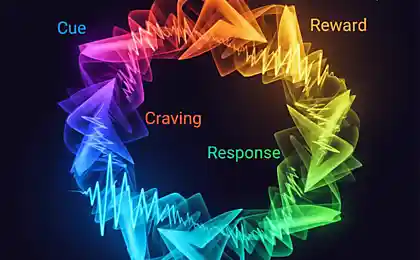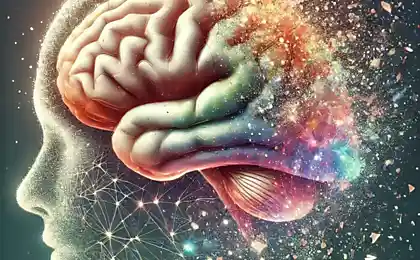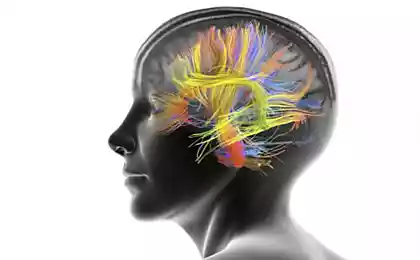199
How to Train Your Brain to Want Healthy, Not Bad Food: The Taste and Neural Connection Revolution
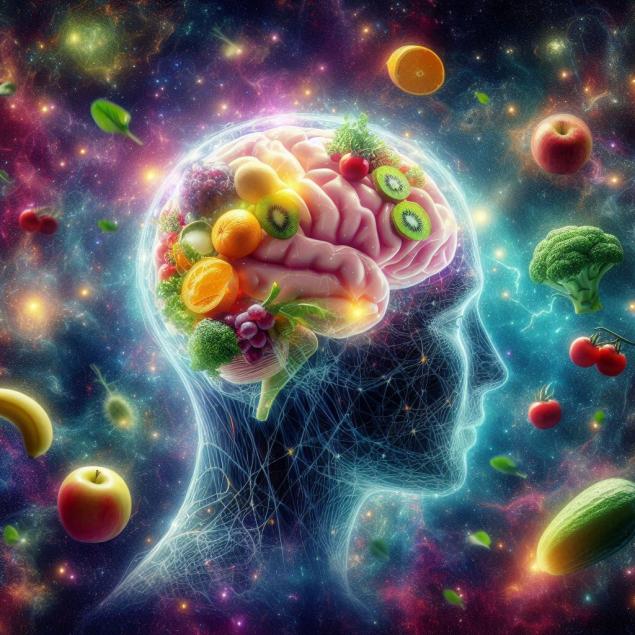
Our brains control everything we do, including our eating habits. Reprogramming it means changing your entire life.
In a world where temptations in the form of fast food, sugary sodas and endless snacks await on every corner, the task of sticking to a healthy diet sometimes seems impossible. We know it's good, but the hand reaches for the liver, and the brain insists on pizza. Why is this happening? And most importantly, how to reverse this trend by teaching your brain not just to tolerate broccoli, but to sincerely desire it? This article is not just a set of dietary tips. This is a deep dive into the world of neuroscience, nutrition psychology and practical life hacks that will allow you to change your eating habits on a fundamental level. We will uncover the secrets of how our brains form addictions and suggest specific strategies for making healthy eating a real pleasure rather than a burden.
“Food is not just fuel. This is the language our body speaks to us. And if we learn to interpret its signals correctly, we can change not only our diet, but also our lives.” - Dr. Sarah Blake, neuroscientist.
Neural labyrinths of desire: Why do we like junk food?
Our brain is an incredibly complex but extremely efficient organ. He constantly strives to save energy and find ways to achieve maximum pleasure with minimal effort. In this context, evolution has played a cruel joke on us. Back in the days when food was scarce, the brain learned to appreciate high-calorie foods rich in fat, sugar and salt. These ingredients gave an instant supply of energy and caused the release of dopamine, a neurotransmitter responsible for feelings of pleasure and reward. Every time we eat something fatty and sweet, the brain receives a powerful dopamine “blow,” anchoring that connection as “useful” and “desirable.”
The modern food industry, well aware of these mechanisms, actively uses them, creating products that literally “capture” our brain. This is the so-called "hedonic hyperactivation" - a state when food becomes not just a means of saturation, but a powerful stimulator of pleasure centers. As a result, stable neural pathways are formed: “fast food = pleasure”, “sweetness = comfort”. These paths are so powerful that it is very difficult to interrupt them with rational arguments about benefits or harms.
At the same time, healthy food, often less saturated with bright tastes and not causing such a powerful dopamine surge, is at a loss. Carrots, for example, will not give such a “high” as a chocolate bar, so the brain does not actively form attachment to it. Our challenge is to change that by rewiring the dopamine system and teaching the brain to enjoy healthy eating.
Reprogramming taste: Strategies for changing eating habits
Now that we understand why the brain is so drawn to the harmful, let’s figure out how to reprogram it. This is not an instantaneous process, but successive steps that require patience and awareness. But the result is worth it – you will not only get a slim body, but also improved health, more energy and clarity of mind.
1. Small Steps and Gradual Replacement
A sharp rejection of all favorite, but harmful products is a direct path to failure. A brain accustomed to certain stimuli will actively resist. Instead, use a gradual replacement strategy. Start by replacing one harmful product with a useful one.
- For example, instead of sweet soda, start drinking water with lemon or unsweetened herbal tea.
- Instead of chips, try baked vegetable chips or a handful of nuts.
- If you like chocolate, switch to dark chocolate with a high cocoa content (70 percent or higher), gradually increasing its percentage.
Each such replacement is a small victory that strengthens new neural connections. The brain gradually adapts, and what seemed tasteless will eventually begin to be perceived differently.
2. Mindfulness and Listening to the Body
Often we eat not because we are hungry, but because we are bored, sad, anxious, or simply “for company.” This is called emotional hunger. Practicing mindful eating will help you distinguish between true hunger and emotional hunger. Before you eat something, ask yourself questions:
- Am I really hungry?
- What exactly am I feeling? Is it physical hunger or emotional hunger?
- What happens if I don’t eat it right now?
- What good will this food do me?
Eat slowly while enjoying each piece. Pay attention to the texture, taste, smell. This helps the brain to better understand the process of satiety and enjoy not the quantity, but the quality of food.

Mindful eating is not just a diet, but a philosophy that teaches us to listen to our bodies and enjoy every moment.
3. Working with Dopamine: Creating Positive Associations
As we mentioned, dopamine plays a key role in the formation of addictions. Our job is to trick the brain into linking healthy eating to positive emotions and rewards. Here are a few ways:
- The aesthetic of the dish: Make healthy food beautiful! Bright colors, neat serving, unusual combinations - all this stimulates the pleasure centers in the brain even before the first piece.
- Positive reinforcements: Once you have eaten a healthy breakfast or lunch, reward yourself with something pleasurable, unrelated to food. It can be a short walk, a favorite music, a call to a friend. The brain will begin to associate healthy eating with these pleasant sensations.
- Experiment with flavors: Healthy eating should not be boring. Use herbs, spices, natural sauces to give vegetables and cereals new, interesting tastes. The more varied and tasty your healthy food is, the faster your brain will get used to it.
- Prepare yourself: Cooking is a process that can be very therapeutic. You control the ingredients, you can add whatever you like, and that increases your sense of control and satisfaction.
Example from Life: The Story of Helena
Elena, a 35-year-old marketer, has always struggled with sweets. In the evenings, after a busy day, she couldn't resist chocolate. Realizing that it was harmful to her health and figure, she decided to change her habits. Instead of completely giving up sweets, Elena started replacing them. At first it was bitter chocolate, then she discovered fruits and berries mixed with natural yogurt. But the key point was that after each such "healthy dessert," she allowed herself 15 minutes of reading a favorite book or listening to relaxing music. Over time, her brain began to associate these pleasurable moments not with chocolate, but with light, healthy desserts. The craving for sweets gradually weakened, and instead came the pleasure of healthy choices.
4. Management of Environment and Triggers
Your environment plays a huge role in shaping your eating habits. If there is a lot of junk food around, it will be much harder for the brain to resist temptation.
- Take away the temptations: Clean your home of high-calorie and ultra-processed foods. If they are not on hand, you will not be able to eat them.
- Find healthy alternatives: Fill the refrigerator and pantry with fresh fruits, vegetables, low-fat protein, whole grains and healthy snacks.
- Plan your meals: Make a menu in advance for the week and make purchases according to it. This reduces the likelihood of impulsive decisions and buying harmful products.
- Avoid “hungry” trips to the store: Go for full foods to avoid the temptation to buy extra.
5. Working with the Intestinal Microbiome: The Second Brain
Few people know that our gut is often called the “second brain” because of its close connection to the central nervous system through the vagus nerve. The billions of bacteria that inhabit our gut (microbiomes) play a huge role in regulating mood, appetite, and even food preferences. An unhealthy microbiome can trigger cravings for certain foods, especially sugar, which is food for pathogenic bacteria.
- Increase your fiber intake: Vegetables, fruits, whole grains, legumes are prebiotics that feed beneficial bacteria.
- Include in the diet probiotics: Fermented foods such as yogurt, kefir, sauerkraut, kimchi, kombucha contain beneficial bacteria that will help restore the balance of microflora.
- Avoid excess sugar and artificial sweeteners: They can negatively affect the composition of the microbiome, promoting the growth of harmful bacteria.
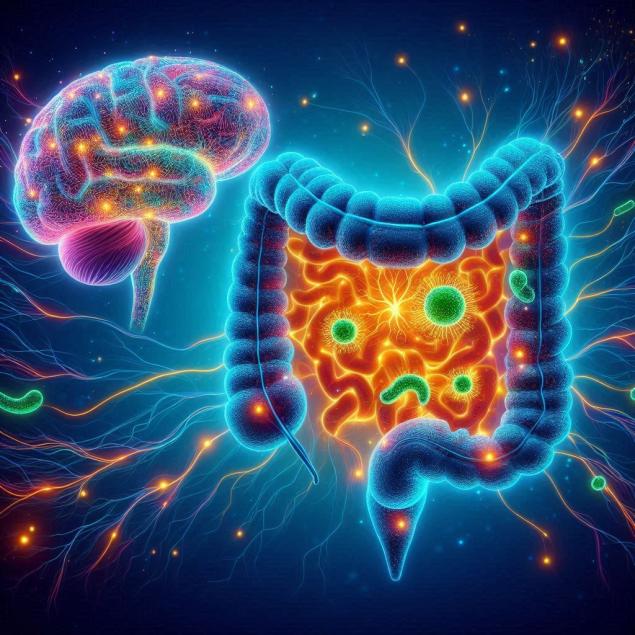
The gut microbiome is our second brain, which has a huge impact on our eating habits and overall well-being.
6. Water balance and adequate sleep
These two factors are often underestimated, but they directly affect our food choices. Dehydration is often disguised as hunger, and lack of sleep leads to increased levels of hunger hormones (ghrelin) and lower levels of saturation hormones (leptin), which increases cravings for high-calorie foods.
- Drink enough water: Carry a bottle of water with you and drink before eating.
- Normalize your sleep: Try to sleep 7-9 hours a day. Quality sleep helps regulate appetite hormones and reduces cravings for junk food.
7. Mental Rebuilding: Changing Attitudes to Eating
Your attitude towards food plays a huge role. If you perceive healthy eating as a punishment or a boring duty, your brain will resist. Change that paradigm.
- Consider food as a source of energy and health. Every meal is an opportunity to give your body everything it needs to function optimally.
- Don't demonize the products: There are no “bad” or “good” products, there are “more useful” and “less useful”. Sometimes you can afford something “harmful”, but it should be the exception, not the rule, and be done consciously.
- Find inspiration: Look for culinary blogs, books, programs that show how varied and tasty a healthy diet can be.
- Visualize success: Imagine yourself healthy, energetic, full of strength thanks to proper nutrition. This mental practice increases motivation.
Reprogramming the brain to a healthy diet is not a one-time action, but an ongoing process that requires patience and self-discipline. But each step in this direction brings you closer to a life full of energy, health and real pleasure from food.
Remember, your brain is your ally, not your enemy. If you learn to negotiate with them using science-based approaches and proven strategies, you can not only change your eating habits, but also gain control over your health and well-being. Let your food be your medicine and your brain be your best chef!
Glossary
dopamine
A neurotransmitter that plays a key role in the brain’s reward system. It is released in response to pleasant stimuli, including when eating delicious (often high-calorie) foods, which contributes to the formation of habits and addictions.
Hedonic hyperactivation
A condition in which eating certain foods, especially those rich in sugar, fat, and salt, causes excessive stimulation of pleasure centers in the brain, leading to increased cravings and overeating.
Neural pathways
The connections between neurons (nerve cells) in the brain through which electrical and chemical signals are transmitted. Repetitive actions or thoughts strengthen certain neural pathways by forming habits.
Conscious eating (mindful eating)
A mindfulness-based practice that teaches you to pay full attention to the eating process, feelings of hunger and satiety, tastes, smells and textures of food, and emotions associated with food.
Gut microbiome
The totality of all microorganisms (bacteria, viruses, fungi, etc.) living in the human intestine. It plays an important role in digestion, the immune system, metabolism and even influencing mood and food preferences through the gut-brain axis.
Prebiotics
Indigestible food components (often types of fiber) that promote the growth and activity of beneficial bacteria in the gut, serving as food for them.
Probiotics
Live microorganisms (usually bacteria) that, when consumed in adequate amounts, have a beneficial effect on the health of the host, improving the composition of the intestinal microflora.
ghrelin
A hormone produced mainly by the stomach, which stimulates hunger and appetite. Its level rises before meals and decreases after.
leptin
A hormone produced by fat cells that signals satiety to the brain and suppresses appetite. Low leptin levels or leptin resistance may contribute to overeating.
6 tips on how to recover from a major quarrel with a girl
Why developing self-awareness can cause pain
